Filter by
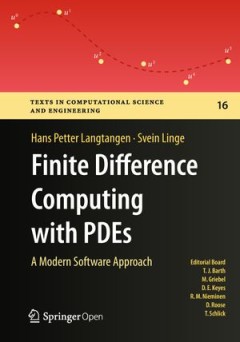
Finite Difference Computing With PDEs: A Modern Software Approach
This easy-to-read book introduces the basics of solving partial differential equations by means of finite difference methods. Unlike many of the traditional academic works on the topic, this book was written for practitioners. Accordingly, it especially addresses: the construction of finite difference schemes, formulation and implementation of algorithms, verification of implementations, analys…
- Edition
- 1
- ISBN/ISSN
- 9783319554556
- Collation
- XXIII, 507
- Series Title
- Texts in Computational Science and Engineering
- Call Number
- 620 LAN f
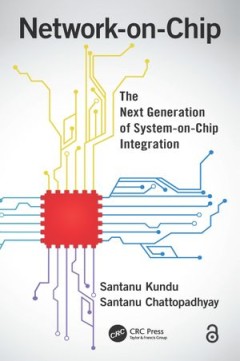
Network-on-Chip: The Next Generation of System-on-Chip Integration
Addresses the Challenges Associated with System-on-Chip IntegrationNetwork-on-Chip: The Next Generation of System-on-Chip Integration examines the current issues restricting chip-on-chip communication efficiency, and explores Network-on-chip (NoC), a promising alternative that equips designers with the capability to produce a scalable, reusable, and high-performance communication backbone by al…
- Edition
- -
- ISBN/ISSN
- 9781466565272
- Collation
- -
- Series Title
- -
- Call Number
- -
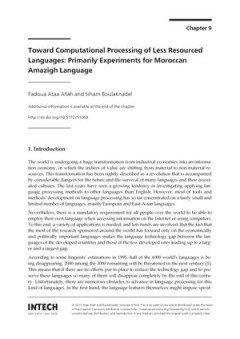
Chapter Measures of Pseudorandomness
In the second half of the 1990s Christian Mauduit and András Sárközy [86] introduced a new quantitative theory of pseudorandomness of binary sequences. Since then numerous papers have been written on this subject and the original theory has been generalized in several directions. Here I give a survey of some of the most important results involving the new quantitative pseudorandom measures o…
- Edition
- -
- ISBN/ISSN
- 9783110283600
- Collation
- -
- Series Title
- -
- Call Number
- -

Re-engineering the Uptake of ICT in Schools
Information Systems and Communication Service; Education, general
- Edition
- -
- ISBN/ISSN
- 9783319193656
- Collation
- -
- Series Title
- -
- Call Number
- -
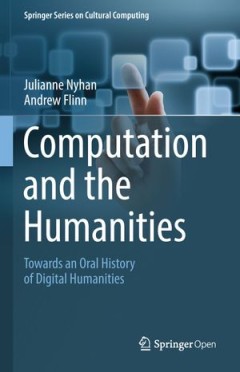
Computation and The Humanities: Towards An oral History of Digital Humanities
user interfaces; human computer interaction; computers and society
- Edition
- -
- ISBN/ISSN
- 9783319201696
- Collation
- -
- Series Title
- -
- Call Number
- 001.6 NYH c
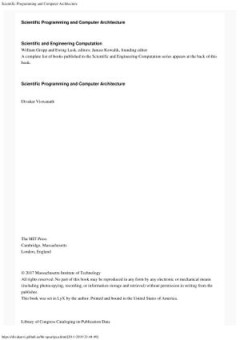
Scientific Programming and Computer Architecture
A variety of programming models relevant to scientists explained, with an emphasis on how programming constructs map to parts of the computer.What makes computer programs fast or slow? To answer this question, we have to get behind the abstractions of programming languages and look at how a computer really works. This book examines and explains a variety of scientific programming models (progra…
- Edition
- -
- ISBN/ISSN
- 9780262340472
- Collation
- -
- Series Title
- -
- Call Number
- -
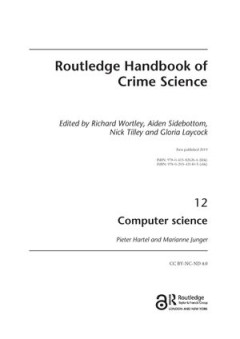
12 Computer science
In this chapter we will explore the relationship between crime and computers and networks by answering the following questions: •• Which techniques from computer science can be used to prevent crime? •• Which techniques from computer science can be used to study crime? To address the first question we use the 25 techniques of situational crime prevention to provide a systematic assessme…
- Edition
- -
- ISBN/ISSN
- 9780415826266
- Collation
- -
- Series Title
- -
- Call Number
- -
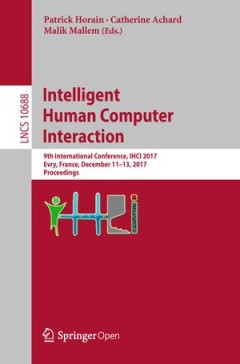
intelligent Human Computer interaction
brain computer interface; artificial intelligence; computer networks; classification databases; HCI machine learning; signal processing; user interfaces
- Edition
- -
- ISBN/ISSN
- 9783319720371
- Collation
- -
- Series Title
- -
- Call Number
- -
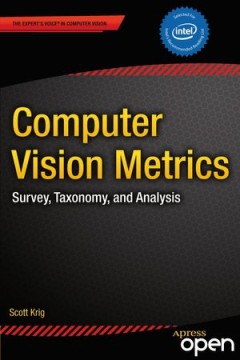
Computer Vision Metrics Survey, Taxonomy, and Analysis
Computer science
- Edition
- -
- ISBN/ISSN
- 9781430259299
- Collation
- -
- Series Title
- -
- Call Number
- -
 Computer Science, Information & General Works
Computer Science, Information & General Works  Philosophy & Psychology
Philosophy & Psychology  Religion
Religion  Social Sciences
Social Sciences  Language
Language  Pure Science
Pure Science  Applied Sciences
Applied Sciences  Art & Recreation
Art & Recreation  Literature
Literature  History & Geography
History & Geography